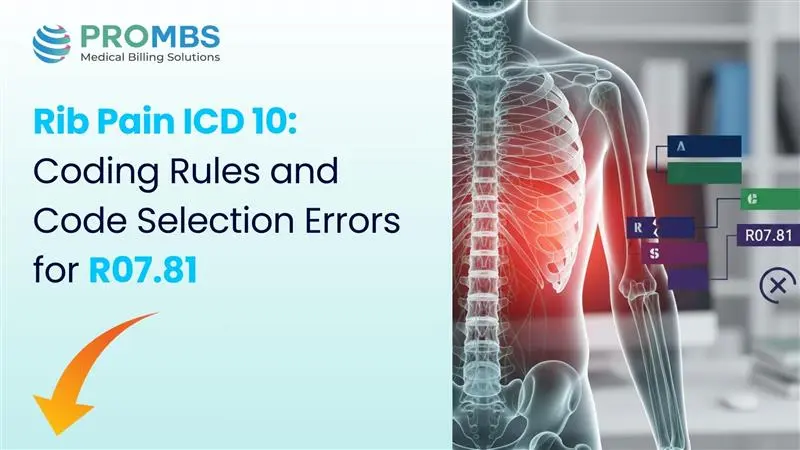For many provider groups, 2025 is shaping up as a pivotal year for Medicare revenue. CMS is accelerating the transition to MIPS Value Pathways (MVPs), shifting from the old reporting model to a structured, specialty-based framework that will soon be the only option. Failing to adapt can trigger a negative payment adjustment of up to 9 percent, a loss that can easily reach five or six figures for a mid-sized clinic.
Time is short. MVP registration closes December 1, 2025, leaving a narrow window to align EHR workflows, select the right pathway, and validate data capture. Many practices are still contending with incomplete CEHRT fields, attribution gaps in population health measures, and uneven documentation workflows. According to CMS, these were the same pitfalls that caused nearly one-third of small and mid-size practices to miss the MIPS performance threshold in 2024.
This Fast-Start MVP Playbook focuses on what leaders need most right now. It offers a clear view of the 2025 changes that drive scoring, guidance for matching MVPs to specialty and data strengths, strategies to optimize EHR data capture, and a focused 90-day compliance plan to stabilize revenue and avoid penalties.
Understanding the MIPS 2025 Fast-Start MVP Playbook
The Merit-based Incentive Payment System (MIPS) 2025 Fast-Start MVP Playbook is a practical guide designed to help providers and revenue-cycle teams adapt quickly to the new MIPS Value Pathways (MVPs) framework.
It focuses on four essential steps:
- Understand the MVP-based reporting model and updated scoring rules.
- Select the right MIPS Value Pathways aligned with your specialty and EHR capabilities.
- Strengthen EHR data capture and documentation to meet CMS validation standards.
- Follow a focused 90-day compliance plan for setup, testing, and audit readiness.
By following this playbook, practices can reduce reporting errors, improve compliance, and protect revenue as CMS accelerates the transition to MVP-based reporting in 2025. It also enables clinical and administrative teams to streamline data capture processes, ensuring consistent performance across all reporting periods.
Key 2025 Changes That Redefine Reporting
The 2025 performance year marks a major transition point. According to CMS, six new MIPS Value Pathways have been approved, bringing the total to 21 specialty-based pathways. Each one groups related quality measures, cost metrics, and improvement activities into an integrated structure.
| 2025 Change | Practical Impact | Compliance Action |
|---|---|---|
| Six new MVPs introduced (total 21) | Expands specialty reporting options | Match MVP to specialty focus early |
| Equal weighting for all Improvement Activities (IA) | Simplifies scoring under MVP | Select one IA for participation |
| Population health measures added automatically | Reduces manual reporting | Confirm EHR supports population data |
| Cost scoring recalibrated | Focus on national median cost performance | Monitor cost trends quarterly |
| Performance threshold remains at 75 points | No leniency for underperformers | Conduct baseline score reviews |
The American Medical Association (2025) notes that MVPs simplify reporting by grouping measures into fewer, more meaningful sets. CMS (2025) cautions that only Certified Electronic Health Record Technology (CEHRT) can capture and transmit data accurately, and outdated templates increase the risk of audits and lower scores.
How to Choose the Right MVP for MIPS 2025
Selecting the right Merit-based Incentive Payment System determines your success in 2025. A poorly aligned choice can result in unreportable measures or inaccurate scoring.
According to the Medical Group Management Association (2025), many practices chose MVPs in early testing years without analyzing their billing patterns, which led to data gaps. The right MVP should align both with your specialty and your EHR’s capabilities.
Align Measures with Your Services
Review Population Health Applicability
CMS (2025) advises practices to confirm they have enough attributed patients for population health scoring. Practices with small or specialized panels may score lower if attribution minimums are not met.
Consider Subgroup Reporting Early
Multispecialty practices should evaluate subgroup reporting, which allows each department to report under its own MVP. CMS states that subgroup reporting is voluntary in 2025 but will become more prominent in coming years. Starting now helps large practices prepare early.
Use Historical Benchmarks to Simulate Scores
The American College of Surgeons (2025) recommends using historical MIPS data to estimate future MVP performance. Early simulation identifies weak areas and helps refine measure selection before registration closes in December 2025.
EHR Data Capture for MIPS MVP Reporting Compliance
Every MVP measure depends on structured data stored in an EHR. According to the Office of the National Coordinator for Health IT (2025), only discrete, coded data elements can be validated for measure scoring. Free-text documentation is not accepted.
| EHR Data Component | Source | Compliance Focus |
|---|---|---|
| Quality Measure Fields | Structured clinical data | Validate completeness and accuracy |
| Improvement Activity Tracking | Workflow automation or logs | Maintain time-stamped documentation |
| Promoting Interoperability | CEHRT-certified software | Confirm 2025 certification status |
Health IT Analytics (2025) reports that practices using manual submissions face triple the rejection risk compared to automated reporting. Implementing real-time EHR dashboards helps monitor progress and highlight missing data. The American Academy of Family Physicians (2025) recommends quarterly internal audits. These checks compare EHR exports against claims data to ensure measure completeness and prevent late-year errors.
Documentation remains critical. CMS requires providers to retain evidence of all Improvement Activities for at least six years. Missing documentation can trigger retroactive penalties even after a submission has been accepted.
Do You Know?
To report under the MIPS Value Pathways (MVP) for the 2025 performance year, practices must register between April 1 and December 1, 2025, according to the CMS QPP “Timeline and Important Deadlines” guidance.
90-Day Compliance Plan for MIPS MVP Reporting 2025
Days 1–30: MVP and Workflow Setup
Finalize your MVP choice and register through the QPP portal. According to CMS, registration runs from April 1 to December 1, 2025. Map each measure to the correct EHR fields and train billing and clinical staff on updated documentation workflows.
Days 31–60: Internal Testing and Validation
Perform a test submission to identify mismatched or missing data. The American Medical Informatics Association (2025) emphasizes that trial submissions reduce post-deadline rework. Start your 90-day Improvement Activity during this phase and record every step within the EHR.
Days 61–90: Audit and Final Readiness
Confirm that all measures meet CMS completeness standards. According to CMS QPP Submission Guidance, incomplete or incorrect submissions are a common cause of performance penalties. Practices should archive all test reports, submission logs, and supporting documentation to remain audit-ready.
Following this phased approach ensures full compliance without overwhelming staff or interrupting clinical workflows.
Reporting Timeline and Year-End Readiness
MIPS 2025 retains the familiar annual reporting cycle but introduces stricter interim checkpoints and documentation requirements for MVP reporters, compelling practices to align data capture, validate measure completeness, and address gaps much earlier in the performance year to avoid compliance risks and end-of-year penalties.
| Timeline | Key Activity | Compliance Objective |
|---|---|---|
| Jan–Mar 2025 | Begin performance data collection | Verify EHR mappings and quality metrics |
| Apr–Dec 2025 | Register and execute MVP | Complete Improvement Activity documentation |
| Oct–Dec 2025 | Audit data and close gaps | Validate readiness for submission |
| Jan–Mar 2026 | Submit MVP data | Avoid missed deadlines and penalty adjustments |
CMS allows clinicians to report under both MVP and traditional MIPS, with the higher score determining the final payment adjustment. This dual option helps protect first-time MVP reporters from penalties. The American Hospital Association (2025) advises confirming submission receipts to avoid disputes and delays, while the American College of Physicians (2025) recommends quarterly reviews to spot weak measures early. Ongoing monitoring helps prevent last-minute surprises.
Why Early MVP Adoption Protects Your Revenue
Early MVP adoption gives providers a strategic advantage. CMS projects that MVPs will replace traditional MIPS entirely by 2027. Adopting now allows practices to refine workflows and build confidence before the mandate. CMS and AMA data show that early MVP reporters spend 25 percent less administrative time on submissions while maintaining higher compliance accuracy. Fewer measures and clearer criteria reduce errors and free resources for patient care.
Avoiding the nine percent penalty is another major incentive. For a single mid-size clinic, that adjustment can mean tens of thousands of dollars in lost Medicare revenue. Practices that prepare early protect both financial stability and operational control.
Partner with PRO-MBS for a Smoother MVP Transition
For many practices, the shift to the MIPS MVP framework adds another layer of operational complexity. Capturing the right quality data in the EHR, ensuring coding accuracy, and preparing for reporting audits can strain both administrative and clinical teams.
PRO-MBS simplifies this transition by leveraging the core services we already provide:
- Our Revenue Cycle Management experts work closely with your team to align billing workflows with MVP reporting requirements and prevent data gaps that can lead to penalties.
- Our Billing & Coding Audit services ensure documentation and coding integrity so your reported measures remain accurate and audit-ready.
- Our AR & Denial Management support minimizes reporting disruptions by addressing payer rejections that often impact MIPS-linked claims.
FAQs
1. What is the MIPS MVP reporting model for 2025?
The MIPS Value Pathways (MVP) model for 2025 replaces traditional MIPS reporting with a specialty-based framework that groups related measures across Quality, Cost, and Improvement Activities. Each MVP streamlines reporting by focusing on clinically relevant data, making it easier for practices to meet CMS requirements and reduce administrative burden.
2. When is the deadline to register for MIPS MVP reporting in 2025?
According to the CMS Quality Payment Program (QPP) timeline, registration for the 2025 performance year runs from April 1 through December 1, 2025. Practices must select and confirm their MVP pathway within this window to ensure participation and avoid penalties.
3. How many MIPS Value Pathways are available in 2025?
As of 2025, CMS has approved 21 total MVPs, including six new specialty pathways introduced this year. Each MVP is designed around specific clinical domains such as Preventive Care, Musculoskeletal Health, or Surgical Care.
4. What happens if a provider fails to participate in MIPS MVP reporting 2025?
Providers who fail to meet MIPS MVP reporting requirements can face a negative payment adjustment of up to 9% on their Medicare reimbursements in 2027 (based on 2025 performance). Timely registration and validated data submission are key to avoiding these penalties.
5. How do I choose the right MVP for my specialty?
Select an MVP that aligns with your most common CPT® and ICD-10 codes, available EHR fields, and patient population. CMS recommends reviewing your prior MIPS performance data and specialty benchmarks to match the MVP that best fits your services and data capture capacity.
6. What EHR requirements are needed for MIPS MVP reporting 2025?
Only Certified Electronic Health Record Technology (CEHRT) is accepted for MVP reporting. Practices must ensure their system can capture structured data, automatically calculate population health measures, and support Promoting Interoperability objectives as defined by CMS.
7. What is the minimum reporting period for Improvement Activities in 2025?
Improvement Activities must be performed and documented for at least 90 continuous days within the 2025 performance year. Practices should maintain audit-ready documentation, including timestamps and workflow logs, for at least six years after submission.
8. Can multispecialty practices use subgroup reporting under MVPs in 2025?
Yes. CMS allows subgroup reporting in 2025 on a voluntary basis. This enables each department within a multispecialty practice to report under its own MVP, improving accuracy and alignment with their specific quality measures.
9. How does population health affect MIPS MVP scoring in 2025?
Population health measures are now automatically included in all MVPs. CMS calculates them from claims data, so even if you don’t manually submit them, incomplete or inaccurate claims can still impact your final performance score.
10. How can ProMBS help with MIPS MVP reporting 2025?
ProMBS helps provider groups and billing teams align EHR workflows, ensure documentation accuracy, and stay audit-ready. From MVP selection and registration to data validation and submission, our experts simplify compliance and protect you from costly CMS penalties.
What is denial code CO-11?
Denial code CO-11 means the diagnosis code reported on a claim is inconsistent with the procedure or service billed, so the payer considers it not medically necessary under their coverage policies. This often occurs when the ICD-10 code chosen does not justify why the CPT/HCPCS procedure was performed, such as a mismatch between the documented condition and the service, use of a nonspecific diagnosis, outdated payer guidelines, or front-end configuration gaps. Correcting it typically involves verifying payer medical-necessity policies, updating the diagnosis or documentation to support the service, and resubmitting or appealing the claim.
How do you prevent CO-11 claim denials?
To reduce claim denials like CO-11, focus on strong front-end validation: verify patient eligibility, check CPT-ICD-10 compatibility against payer medical-necessity policies, and ensure proper documentation before submission. Keep payer guidelines updated, use automated edits in your EHR or clearinghouse to flag mismatches, and analyze denial trends to fix recurring issues. Consistent provider education and timely appeals help maintain a high clean-claim rate and minimize CO-11 denials.
Can a CO-11 denial be appealed, and how?
Yes, a CO-11 denial can be appealed if the service was medically necessary and properly documented. To do this, review the payer’s medical necessity policy and confirm that the documentation supports the procedure for the reported diagnosis. If the diagnosis code was incorrect, correct it and resubmit the claim. If the original code was appropriate, submit a formal appeal letter with the claim, including the provider’s medical notes, test results, and any supporting payer guidelines or LCD/NCD references that justify the service. Timely filing is crucial because appeals must be submitted within the payer’s appeal window, usually 30 to 90 days.
Why do payers issue a CO-11 denial?
Payers issue a CO-11 denial when the diagnosis code on a claim does not support the medical necessity of the procedure or service billed. This often happens due to mismatches between the CPT and ICD-10 codes, use of nonspecific or outdated diagnosis codes, failure to follow payer medical necessity guidelines, or gaps in provider documentation. Essentially, the payer’s system flags that the reported diagnosis does not justify why the billed service was performed.
What does denial code CO-11 mean in medical billing?
Denial code CO-11 in medical billing means that the diagnosis code submitted on the claim does not support the medical necessity for the billed procedure or service. This occurs when there is a mismatch between the ICD-10 diagnosis and the CPT or HCPCS procedure code, such as using an unrelated or nonspecific diagnosis, not following payer medical necessity policies, or having insufficient documentation. As a result, the payer rejects the claim until the issue is corrected or properly appealed.
Does CO-11 denial mean the claim is not covered at all?
No, a CO-11 denial does not mean the claim is permanently not covered. It indicates that the payer believes the diagnosis provided does not justify the medical necessity for the billed service. In most cases, the claim can be corrected and resubmitted by updating the diagnosis code to one that meets the payer’s medical necessity policy or by submitting an appeal with supporting clinical documentation to prove that the service was appropriate for the reported condition.



